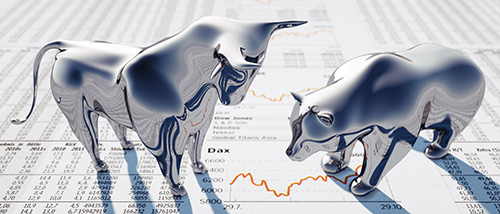Just two days after the SPX and Nasdaq Composite Index COMP hit closing records, investors watched as the NASDAQ fell by 600 points, and the Dow Jones Industrial Average fell by 800 points. The drop was led by big tech companies losing 3-5%.
Keith Lerner, Chief Market Strategist at SunTrust Advisory, says pullbacks are normal in the first nine months of a bull market. The Markets of 1987 and 2002 saw four pullbacks, and the 2009 Market saw three, which indicates decent odds that the 2020 Market could see yet another in the coming months.
Bull market investors see the pullbacks as natural corrective phases for excessive equity valuations. They’re also well-versed in the “September Effect” and expected a pullback this month as a historical matter of course, although not quite this deep. The “September Effect” is a world-wide market phenomenon unrelated to specific news and events. According to Investopedia, the Nasdaq has experienced an average decline of 0.5%, the Dow Jones Industrial Average an average of 0.8%, and the S&P500 an average of 0.5%, although the effect appears to be diminishing likely due to investor pre-positioning in August. Explanations for the effect range from investors cashing in their holdings at the end of summer for tax purposes to increased vacation time during September. Investors may sell market positions prior to their vacation, so they don’t need to keep a watchful eye over them while on holiday.
Further bolstering the bull-market perspective—yields, on Friday, September 4, climbed as stocks fell which indicates investors view this as a temporary pullback, not a lasting decline which would’ve spurred a turn toward the safety of government debt.
Investors appear to be focused on “Stay at Home” companies such as Zoom, which in addition to thriving during “Stay at Home” orders by providing a means for businesses to continue operating while offices are closed, may also be positioned well as the economy emerges from recession.
From the bear-market perspective, markets hold a lot of uncertainty. Thursday’s “mini-tech sell-off” hurt investors who are focused on September’s reputation of decline and think October will also be rough due to the upcoming election and expectation of COVID-19 resurgence.
Bear market analysts believe there is a shift occurring because the S&P500 closed below its uptrend for the first time since April 3. They also have suspicions that Friday’s rally into close may have been due to short-covering rather than real buying. Many of these analysts look to Tesla as an indication of market health. As a result, they view Tesla’s drop and the lack of entry to S&P500 as confirmation of the market’s weakness.
NPR’s interview with Fed Chairman, Jerome Powell on September 4 relayed the Fed’s perspective that economic progress will be slow. Investors will be watching the results of next week’s Fed policy meeting for economic solutions, as there are few alternatives to stocks while bonds top out around 1%.
DeCambre, Mark; Here’s Why the Dow Plunged Last Week and What’s Ahead for the Stock Market; MarketWatch; September 5, 2020. https://www.marketwatch.com/story/heres-why-the-dow-plunged-last-week-and-whats-ahead-for-the-stock-market-11599313895
Katz, Harvey S., CFA; Stock Market Today: September 3, 2020; Value Line; September 3, 2020. https://www.valueline.com/Markets/Daily_Updates/Stock_Market_Today__September_3,_2020.aspx#.X1fkK3lKg2w
Gallant, Chris; Why People Say September is the Worst Month for Investing; Investopedia; May 17, 2020. https://www.investopedia.com/ask/answers/06/septworstmonth.asp
Keith Lerner, Chief Market Strategist at SunTrust Advisory, says pullbacks are normal in the first nine months of a bull market. The Markets of 1987 and 2002 saw four pullbacks, and the 2009 Market saw three, which indicates decent odds that the 2020 Market could see yet another in the coming months.
Bull market investors see the pullbacks as natural corrective phases for excessive equity valuations. They’re also well-versed in the “September Effect” and expected a pullback this month as a historical matter of course, although not quite this deep. The “September Effect” is a world-wide market phenomenon unrelated to specific news and events. According to Investopedia, the Nasdaq has experienced an average decline of 0.5%, the Dow Jones Industrial Average an average of 0.8%, and the S&P500 an average of 0.5%, although the effect appears to be diminishing likely due to investor pre-positioning in August. Explanations for the effect range from investors cashing in their holdings at the end of summer for tax purposes to increased vacation time during September. Investors may sell market positions prior to their vacation, so they don’t need to keep a watchful eye over them while on holiday.
Further bolstering the bull-market perspective—yields, on Friday, September 4, climbed as stocks fell which indicates investors view this as a temporary pullback, not a lasting decline which would’ve spurred a turn toward the safety of government debt.
Investors appear to be focused on “Stay at Home” companies such as Zoom, which in addition to thriving during “Stay at Home” orders by providing a means for businesses to continue operating while offices are closed, may also be positioned well as the economy emerges from recession.
From the bear-market perspective, markets hold a lot of uncertainty. Thursday’s “mini-tech sell-off” hurt investors who are focused on September’s reputation of decline and think October will also be rough due to the upcoming election and expectation of COVID-19 resurgence.
Bear market analysts believe there is a shift occurring because the S&P500 closed below its uptrend for the first time since April 3. They also have suspicions that Friday’s rally into close may have been due to short-covering rather than real buying. Many of these analysts look to Tesla as an indication of market health. As a result, they view Tesla’s drop and the lack of entry to S&P500 as confirmation of the market’s weakness.
NPR’s interview with Fed Chairman, Jerome Powell on September 4 relayed the Fed’s perspective that economic progress will be slow. Investors will be watching the results of next week’s Fed policy meeting for economic solutions, as there are few alternatives to stocks while bonds top out around 1%.
DeCambre, Mark; Here’s Why the Dow Plunged Last Week and What’s Ahead for the Stock Market; MarketWatch; September 5, 2020. https://www.marketwatch.com/story/heres-why-the-dow-plunged-last-week-and-whats-ahead-for-the-stock-market-11599313895
Katz, Harvey S., CFA; Stock Market Today: September 3, 2020; Value Line; September 3, 2020. https://www.valueline.com/Markets/Daily_Updates/Stock_Market_Today__September_3,_2020.aspx#.X1fkK3lKg2w
Gallant, Chris; Why People Say September is the Worst Month for Investing; Investopedia; May 17, 2020. https://www.investopedia.com/ask/answers/06/septworstmonth.asp

